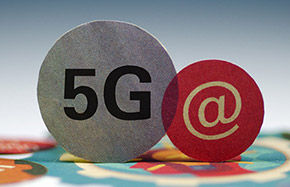Brewing up ever more sales of ales
By Xie Yu in Shanghai (China Daily) Updated: 2013-10-17 07:12Fierce competitors
Beer sales in China rose 4.8 percent last year, to 47.5 billion liters. By 2016 they could top 61 billion liters with sales growth of premium brands set to outpace that of economy brews, market researcher Euromonitor International predicts.
"The annual sales growth rate used to be as high as more than 10 percent before 2008 but has fallen to single digits in the last five years. Low-price competition is no longer the big trend in the market. On the contrary, competition in the middle- to-high end market is becoming more fierce," said Fang.
It seems unbelievable that a bottle of beer can cost 50 yuan because traditionally people consider it similar to a soft drink, while Chinese baijiu can command big money.
However, in the next few years, the structure of beer products will transform with industry consolidation. Low-end products will shrink remarkably, while middle- and high-end sales will surge and the super high-end segment may be owned by foreign brands, Fang added.
AB InBev has set a goal for its global leading brand Budweiser to become the most preferred premium beer brand in China.
First created in the US, Budweiser entered China in the mid-1990s.
"We actually began as a latecomer in the market. There were other beer brands in the premium segment in 1995 with a strong market share. Our initial launch of Budweiser in 1995 didn't go as well as expected," said Doukeris.
There were a number of issues, including undifferentiated packaging, marketing that wasn't relevant to the customer and the employment of a US-style distribution model that did not apply in China, he explained.
But now, in 2012, Budweiser volumes in China are growing in double digits, making China the biggest contributor to Budweiser's growth globally. Budweiser's share of the premium market accounted for 42 percent in the full year of 2011 in China.
This year, the company introduced an upgraded Budweiser - Budweiser Supreme - to the China market to strengthen its strategy of promoting high-end beer products in China.
The product sells for at least 20 yuan per bottle in some Chinese restaurants.
Meanwhile, the company is introducing a line of other high-end beers including Stella Artois and Leffe to more emerging bars, restaurants and hotels in big cities.
AB InBev has been expanding "aggressively" in the Chinese market, said Fang.
The company opened breweries in Southwest China's Sichuan province in 2011, the southeast's Fujian and central's Henan provinces in 2012. This year it added breweries in the northeastern provinces of Liaoning and Jilin.
"We are No 3 in China now. There is plenty of room for us to improve market share," said Doukeris.
Through mergers and acquisitions and building new breweries, the company now has the biggest production capacity in the beer industry in China and operates 25 Chinese beer brands.
- China 'incredibly innovative' in many areas: Apple CEO
- City official: Guangzhou further committed to opening-up
- Jack Ma: Globalization backed by technology will cut inequality
- HNA confirms interest in ASEAN's infrastructure investment
- Comments on Xi's letter to 2017 Fortune Global Forum
- China to create more opportunities for the world: Xi
- US tax cuts impact on China two-sided: economists
- Chinese enterprises job fair to be held in Sri Lanka

















